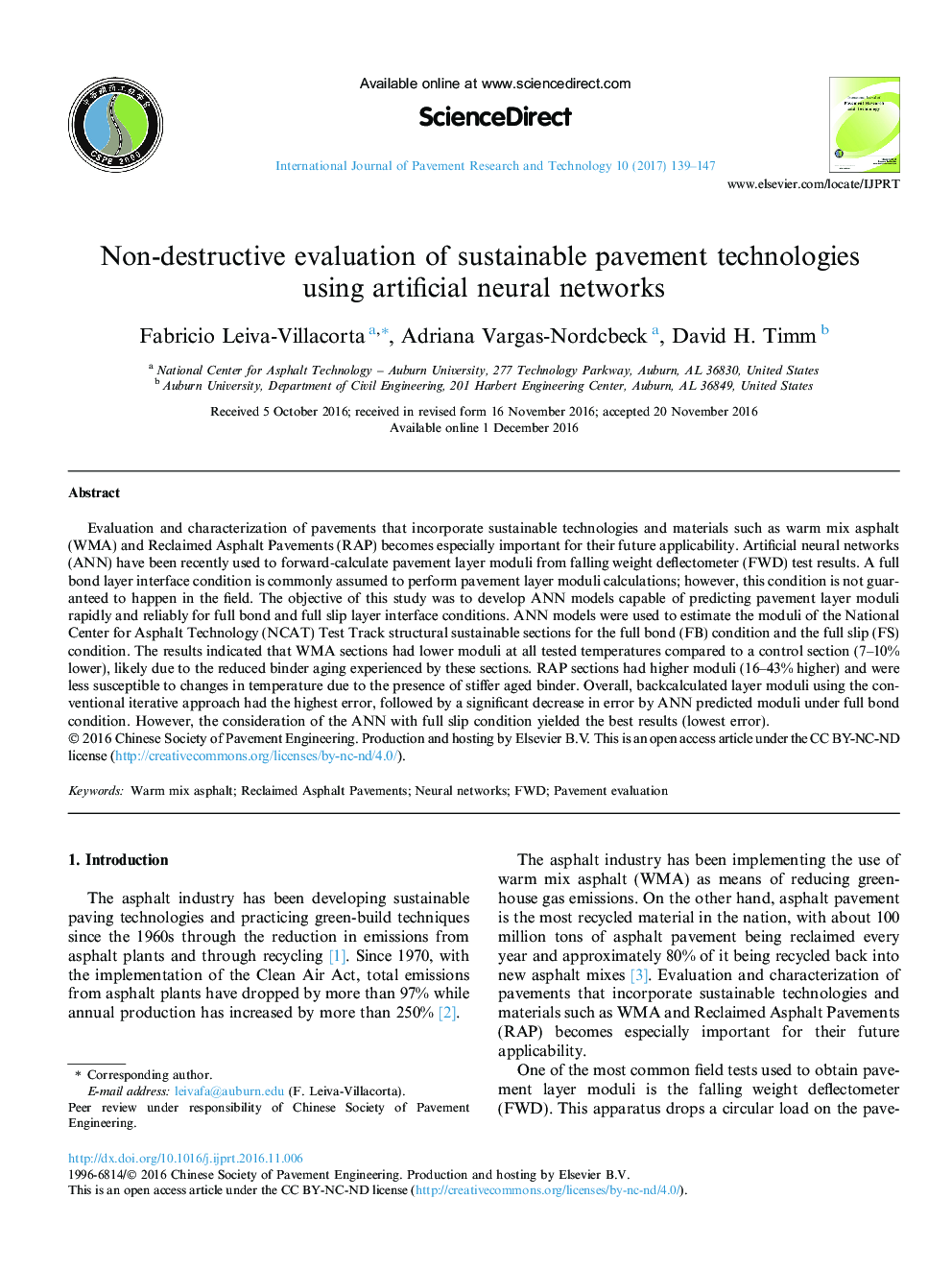| Article ID | Journal | Published Year | Pages | File Type |
|---|---|---|---|---|
| 4922005 | International Journal of Pavement Research and Technology | 2017 | 9 Pages |
Evaluation and characterization of pavements that incorporate sustainable technologies and materials such as warm mix asphalt (WMA) and Reclaimed Asphalt Pavements (RAP) becomes especially important for their future applicability. Artificial neural networks (ANN) have been recently used to forward-calculate pavement layer moduli from falling weight deflectometer (FWD) test results. A full bond layer interface condition is commonly assumed to perform pavement layer moduli calculations; however, this condition is not guaranteed to happen in the field. The objective of this study was to develop ANN models capable of predicting pavement layer moduli rapidly and reliably for full bond and full slip layer interface conditions. ANN models were used to estimate the moduli of the National Center for Asphalt Technology (NCAT) Test Track structural sustainable sections for the full bond (FB) condition and the full slip (FS) condition. The results indicated that WMA sections had lower moduli at all tested temperatures compared to a control section (7-10% lower), likely due to the reduced binder aging experienced by these sections. RAP sections had higher moduli (16-43% higher) and were less susceptible to changes in temperature due to the presence of stiffer aged binder. Overall, backcalculated layer moduli using the conventional iterative approach had the highest error, followed by a significant decrease in error by ANN predicted moduli under full bond condition. However, the consideration of the ANN with full slip condition yielded the best results (lowest error).
